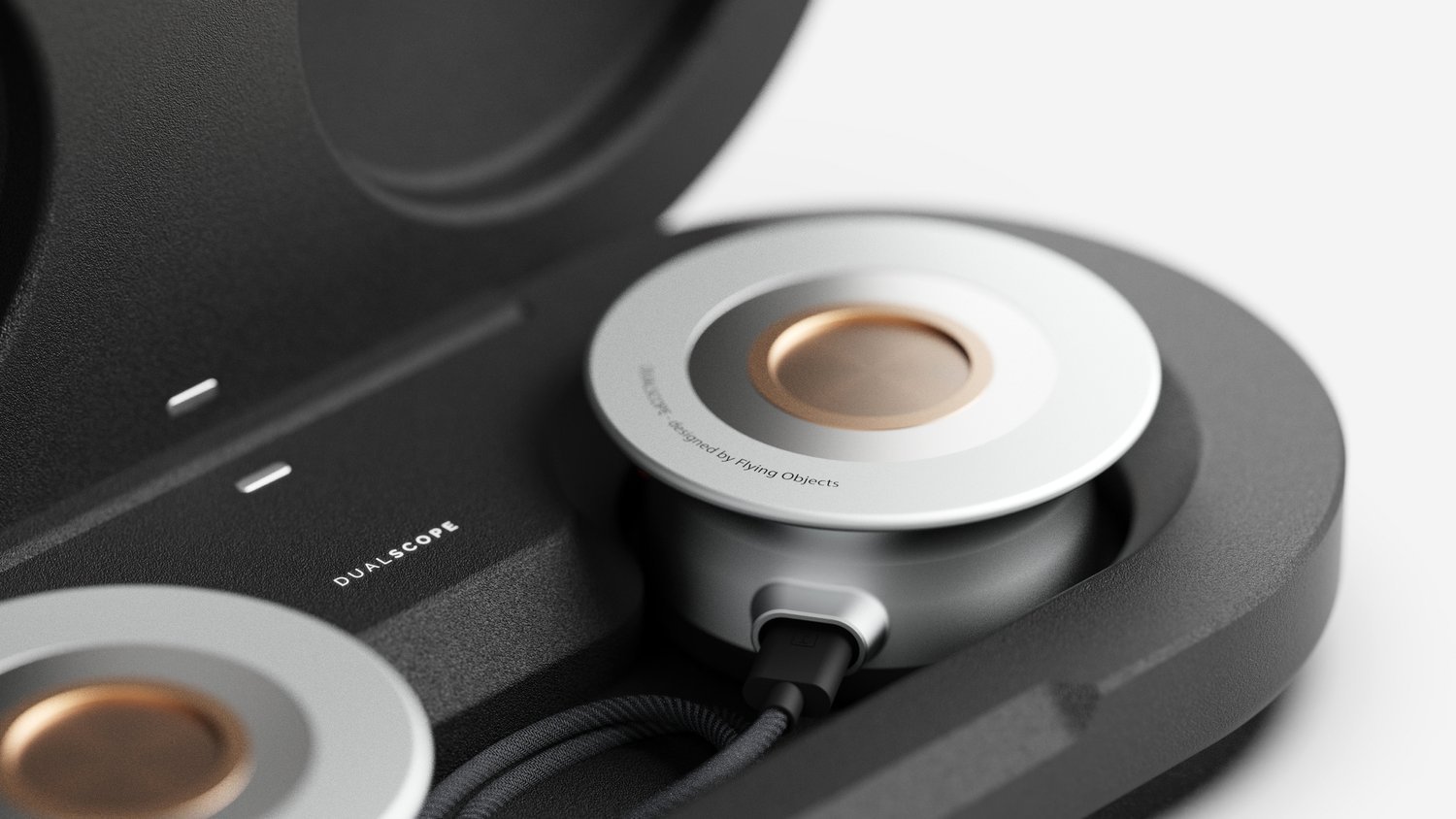Axalton ECG Dualscope
2-headed digital stethoscope with ECG capability
Heart and lung examination with the same device
The device is patented technology with integrated artificial intelligence solutions and analytic algorithms can help doctors to detect a wide range of heart and lung malfunctions at an early stage.
Axalton ECG Dualscope is a professional medical device with the friendly aesthetics of a wearable gadget.
A familiar first line diagnostic tool
Axalton ECG Dualscope allows an in-depth lung and heart examination that was previously only available with more specialized medical tools.
Thanks to its two sensors, it is optimized for detecting and interpreting lung sounds and can simultaneously analyse the electrical condition of the heart (ECG) and heart sound (PCG).
The intuitive touch display on the sensors provides immediate feedback on the measurements, and a more detailed analysis is possible through the mobile app of Axalton ECG Dualscope.
The measured signals, as well as the results of processing, are stored in a database where they can be retrieved from or forwarded.
The examination methods are the same as with a normal stethoscope, Axalton ECG Dualscope is familiar for all healthcare professionals and it is easy to use
In a hospital environment it can offer a fast and reliable diagnosis
Can be used where larger ECG machines are not available
Heart Examination
Lung Examination

Award-Winning Design
Axalton ECG Dualscope has won the prestigious iF design award, where it was acclaimed not only for its conscious and sophisticated design, but for the remarkable cohesion of innovation and looks.
Stethoscopes have been the attributes of medical professionals since they were invented. Worn around the neck, these objects symbolize healing, proficiency and reliability. Axalton ECG Dualscope was designed to carry on the positive associations regarding the image of the stethoscope.
The device’s technological development was based on medical computing and body surface mapping research done in close cooperation with universities and also professors of medicine and engineering.

Hardware
Technological novelties:
Two simultaneous sensors: the sequence of opening of the two aortic valves and the sequence of closure of the atrial valves become visible
Sensors located in outer circles
The inner circular box contains the data logger, data transmission circuits and the battery
Professional significance
Cardiac abnormalities can be diagnosed with greater accuracy than before
Form and usage that is already familiar to physicians
Software
Technological novelties:
The software allows the signal of the two sensors to be displayed acoustically (even separately)
The signals recorded electronically in digital form are entered into a database and can be forwarded for control
Additional processing steps performed by the software:
Separation of heart sounds and noises
Determination of the beginning (and possibly the end) of waves on
Noise-free heart sounds
Determination of cardiac cycle duration (RR distance) from the ECG
Signal recorded in parallel
Professional significance
Display familiar to physicians
Supports educational goals
Supports telemedicine
The duration of PEP (pre-injection period) and LVET (left ventricular ejection time) used to characterize the mechanical function of the heart can be identified with sufficient accuracy













